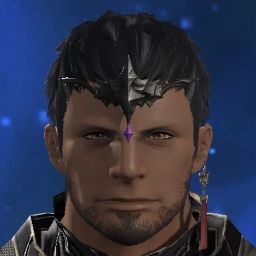Thread: DPS Queue Times
-
02-16-2018 03:02 AM #41Player

- Join Date
- Jun 2017
- Location
- The Goblet
- Posts
- 1,510
- Character
- Cecelia Stormfeather
- World
- Cactuar
- Main Class
- White Mage Lv 90
(0)Survivor of Housing Savage 2018.
Discord: Tridus#2642
-
02-16-2018 03:45 AM #42Player

- Join Date
- Jun 2017
- Location
- The Goblet
- Posts
- 1,510
- Character
- Cecelia Stormfeather
- World
- Cactuar
- Main Class
- White Mage Lv 90
And lose our regular game of "who is going to get stuck DPSing this expert?"

That wraps around to the "can they even add another healer?" thread. And yes, that's a problem. Fundamentally, a DPS job has to be able to put out X DPS in personal DPS and group utility to be viable. How it does that isn't relevant. So you can come up with distinct playstyles more easily.That aside... no? I'll elaborate. I don't think I spent enough time on my prior post. When I say 'variety' it isn't just that there are more dps but rather the actual variety offered by dps gameplay.
The variety of dps roles isn't just that there are nine of them instead of 3 tanks and 3 healers it's that they all offer different gameplay. They've got definition to them that you just don't find with tanks and healers. All tanks have a threat combo, an AoE enmity generator on GCD, a ST ranged enmity generator, an immunity, tank stance, dps stance... there is serious homoginization here. All healers have a basic ST heal, stronger ST heal, basic AoE heal, stronger AoE heal, Raise not to mention almost always taking the same role actions with little exception. Let's not look too hard at AST/WHM in particular because we all know what a cookie cutter that is.
Healing is not that. Putting out X HPS is meaningless, because healing requirements in this game are bursty. You need a big shield and lots of burst healing at one moment, and then little to nothing for a while. That means any healer they add MUST have that burst potential in order to be viable, which immediately kills concepts like a healer that does steady healing via damage dealing (because most of it would be overheal and you'd need to have a way to burst heal). They only really have three cast speeds on spells: instant, GCD length, and "Raise". So without changing that, concepts that play with spell speed for fast & small/slow & large heals don't work.
Tanks are similar in that they all need a certain amount of on demand mitigation due to how encounters are designed, they all need threat builders, etc. There might be a bit more room for variety there, but in general these two roles have requirements far more specific in nature than "do damage". That greatly narrows the options for making them unique. AST is the shining example of the problem, but I don't think it's easily fixable without changing how encounters are designed and opening up more spell cast time options, among other things.
Yep.I understand why these similaraties in support roles exist but it doesn't change the fact that it contributes to them feeling very similar overall and especially when compared to their DPS brethren who rarely share anything apart from role actions and for melee the presence of combos (except MNK).
In my opinion (as someome who still consideres themselves a healer main) DPS roles in general were designed with distinct identities in mind and then had potency tweaks to bring their dps more or less in line with each other where as tanks and especially healers were designed around their utilities and core skillset and then separated at some points by little more than aesthetics.
That'd be why PLD is the only tank I have past 30. I have no incentive to go do those ARR dungeons again on the other two.The reason I enjoy dpsing now is that each time I do it the experience still feels fresh, probably because I've banged healer reflex memory into my skull through leveling them each to 70. There is a reason Cure/Physick/Benefic all share a button for me and for most healers. For someone who doesn't enjoy the actual healing gameplay I'd wager (much like me with tanking) the thought of leveling another job through basically the same routine seems at best daunting and at worst boring. I am quite sure this contributes in a meaningful way to the dps queue times.
But if you look at other games, the same imbalances exist even where the tanks & healers are more distinct, like WoW was. Fundamentally, the people who actually want to do those roles are a clear minority. Making another job doesn't change that. You cannot take someone who doesn't want to be responsible for keeping the party alive and get them to play a healing class, no matter how many of them you add. The roles are not balanced on responsibility, how publicly obvious your failures are (ESPECIALLY in a game that bans parsers), and how much you have to pay attention to what the rest of the group is doing. No amount of classes will change that imbalance, and that's a major factor for a lot of people.
In a trinity game, it's a problem that is very hard to solve.
Tuning every encounter in the game to account for the DPS and more people on mechanics is the obvious cost. While it's substantial, it's not the biggest hurdle. There are two other major things:Also I'm very much in favor of 5 man dungeons and I don't think it would take as much tweaking as some people think either. Obviously we would need to increase enemy HP proportionally but there are plenty of dungeons where no actual mechs would need altering.
1. Anywhere in the code where someone made the assumption that a party size is X (4/8) is suspect, becauase if they used a hardcoded number instead of a constant for the maximum, increasing it will break and probably cause a crash bug. That includes many places in the UI, network code, and so on. Much of that code will be very old, likely from 2.0 and possibly from 1.0 if it was carried forward. Going through all of that is a big deal.
2. Network load. While it looks like you're simply adding one person to a group of 4, or a 25% increase, what you're actually doing is far more impactful on the network. When the server is talking to clients in a party, it has to tell every client what every other client is doing, in addition to various system statuses and what the NPCs are doing. System status/NPCs are fixed cost, they don't change based on party size. The cost to tell a client about the other clients is exponential with party size, and for simplicity purpose we're leaving out the server having to tell your client about itself:
in a party of 2, the server tells 2 clients what 1 client is doing, for a total cost of 2*1 = 2
in a party of 3, the server tells 3 clients what 2 clients are doing for a total cost of 3*2=6
in a party of 4, the server tells 4 clients what 3 clients are doing for a total cost of 4*3=12
in a party of 5, the server tells 5 clients what 4 clients are doing for a total cost of 5*4=20
in a party of 8, the server tells 8 clients what 7 clients are doing for a total cost of 8*7=56
in a party of 10, the server tells 10 clients what 9 clients are doing for a total cost of 3*2=90
in a party of 24, the server tells 24 clients what 23 clients are doing for a total cost of 24*23=552 (these numbers being so large is why Alliance raids tend to be janky with things like raid wide damage taking so long to hit everyone, as the server works its way through each person and tells every client. It's also why world zones are limited to a certain size, because 1000 people showing up at the same FATE would create overwhelming load, although there's various techniques to mitigate this)
in a party of 30, the server tells 30 clients what 29 clients are doing for a total cost of 30*29=870
As you can see, boosting party sizes significantly increases the cost of keeping clients in sync on what the other clients are doing. That's a manageable thing, of course, but it's a much bigger deal than simply having the encounter design team boost the HP on everything and call it a day. You also have to multiply those increases by all the groups playing, which won't particularly change because the number of tanks & healers likely won't change a ton (it may go down a bit if queue times decrease). Total load goes up as a result of the change.
As a programmer, I'd argue that the encounter design is the easiest part. While it's certainly a major undertaking, it's fundamentally data manipulation primarily and is a known workload quantity that doesn't impact anything else the same way the network load changes do.(0)Last edited by Tridus; 02-16-2018 at 03:53 AM.
Survivor of Housing Savage 2018.
Discord: Tridus#2642
-
02-16-2018 04:08 AM #43
-
02-16-2018 04:41 AM #44Player

- Join Date
- Mar 2011
- Posts
- 964
- Character
- Maeror Montealvo
- World
- Sargatanas
- Main Class
- Dark Knight Lv 100
Hey! I represent that remark!
In all seriousness, every game with the trinity mechanic suffers from the Tank/ Healer stigma. It's not only that DPS are deigned to be more fun to play, they are more fun to play because they are not loaded with the responsibilities the others seem to be saddled with. Speaking as merely a casual i cannot say for certain, but i have seldom heard of Healers DPS being integral for completion in everything from pug dungeon runs to endgame progression. The same could be said for the DPS meta minded push for Tanks to do their jobs out of defense stances to push higher DPS for faster completion. Both are not things tailored to the roles but have now seemed to have become expected, regardless of the fine line between success and failure that comes from risk/reward game play styles.
Some do not want and cannot thrive in that situation, couple this with the current imbalance of the shear numbers DPS to other roles and the issue was certain to come yet again to a head (something that was certainly not helped with Samurai being made a DPS).
What ever is released next (job wise) must contend with many issues right out of the gate, and how the community will dictate how it is used in content.
Leveling advice? Make a play list of videos/ music on repeat and Palace of The Dead until you're sick of it... Then do it again a million times. You'll hate it but you'll be level 70 and have no idea what your doing with your job like many others.
"~Crawling in my skin..."(1)
-
02-16-2018 07:10 AM #45Player

- Join Date
- Jun 2015
- Posts
- 1,384
- Character
- Jijifli Kokofli
- World
- Balmung
- Main Class
- Arcanist Lv 55
DPS queue's were still an issue in ARR. They chose to do 1 healer, 1 tank, and 1 dps. The tank is a very loved type of job (DRK) and the dps that came out is still statistically the least played dps in the game (MCH)
Yet after 2 weeks, the queue barely changed in time. It only sped up for people leveling in the 30-60 range because people wanted to try out the tank. Then, they stopped. I even remember reading that Square said most of the people that stuck with DRK already played a PLD or WAR, so it didn't really change the amount of played tanks.
As pointed out once the "no tank or healer in SB debate", we keep begging for a new tank, but would you play that new tank?(1)
-
02-16-2018 07:55 AM #46Player

- Join Date
- Aug 2015
- Posts
- 3,565
- Character
- Lodestone Bait
- World
- Pandaemonium
- Main Class
- Gladiator Lv 1
I'd say that depends. I know I for one did play DRK fairly regularly in dungeons up until Stormblood, even if I didn't main it - It wasn't my favorite, but I liked it more than waiting. Then they changed it and I can't even bear leveling it all the way to 70 now, much less use it afterward. I'd do the same with any other potential "new" tank that might suit my fancy. I'd also play DRK again if it was reverted, but let's be realistic here <.<'
(0)
-
02-16-2018 11:04 AM #47Player
- Join Date
- Jan 2017
- Posts
- 127
OK buddy. Sit down, get some hot chocolate and read my long and desperate post of why I think we need more Tank jobs and why I think you are not right. I will include few quoted posts in my post. Pls note I can't edit since I'm on mobile device. As for grammar mistakes and typos, I'm sorry. English isn't my native language.
As for your quoted question It depends. If new tanking job would be bad in its job, uninteresting and unfun I would say no. In fact it would have a negative effect or maybe none at all and such job would be ignored. As a tank main with limited time to play I don't want to play a job if its not worth it/rewarding/fun. In fact I don't like to dps at all. Heaving only 3 classes that are related to your favorite play style seems very little compared to 9 dps jobs.(0)
-
02-16-2018 11:06 AM #48Player
- Join Date
- Jan 2017
- Posts
- 127
So my argument nr 1:
"Build Job diversity is key to player retention, I think. It keeps things fresh enough that players won't get bored as easily as they would by playing the same cookie class jobs builds." - so pls have in mind that we tanks want some brand new jobs to play as well. Fact that dps are more favorable than other jobs shouldn't be an argument to not give us more tanking jobs.
.(1)
-
02-16-2018 11:07 AM #49Player
- Join Date
- Jan 2017
- Posts
- 127
Argument nr 2:
"Tanks are the most abused class in any MMO. Everything gets blamed on the tank. And if you did not spend an hour studying the encounter prior to queuing prepare to get booted from the group or verbally abused for the next 30 minutes or so. The MMO community caused this problem." - so it's not a badly designed job or unfun job/class but the expectations that are made by the community for the community. While I don't have any ideas how to resolve the problem of studying for the test and hope to pass it, in terms of raiding, dungeons and etc. I don't think that not encouraging tanking by adding more tanking jobs is a right solution either.(0)
-
02-16-2018 11:08 AM #50Player
- Join Date
- Jan 2017
- Posts
- 127
Argument 3:
If we are to approach the moment where tanks jobs will remain untoched and unaddressed. We will see the process to bribe the player method. Special mounts, free materia, unique titles. It will be a free chicken method and we will have players to do it just for the reward and then abandon the tank job. It's ok I guess but why not try to balance them around and keep adding additions as of new tanking jobs to the game to have permanent tank players.
I'm really not used to make such long posts so I hope I did somewhat good showing my side of a look at the things. Thanks for reading! Ps Man its really bad to post here on mobile device D: .(1)





 Reply With Quote
Reply With Quote






